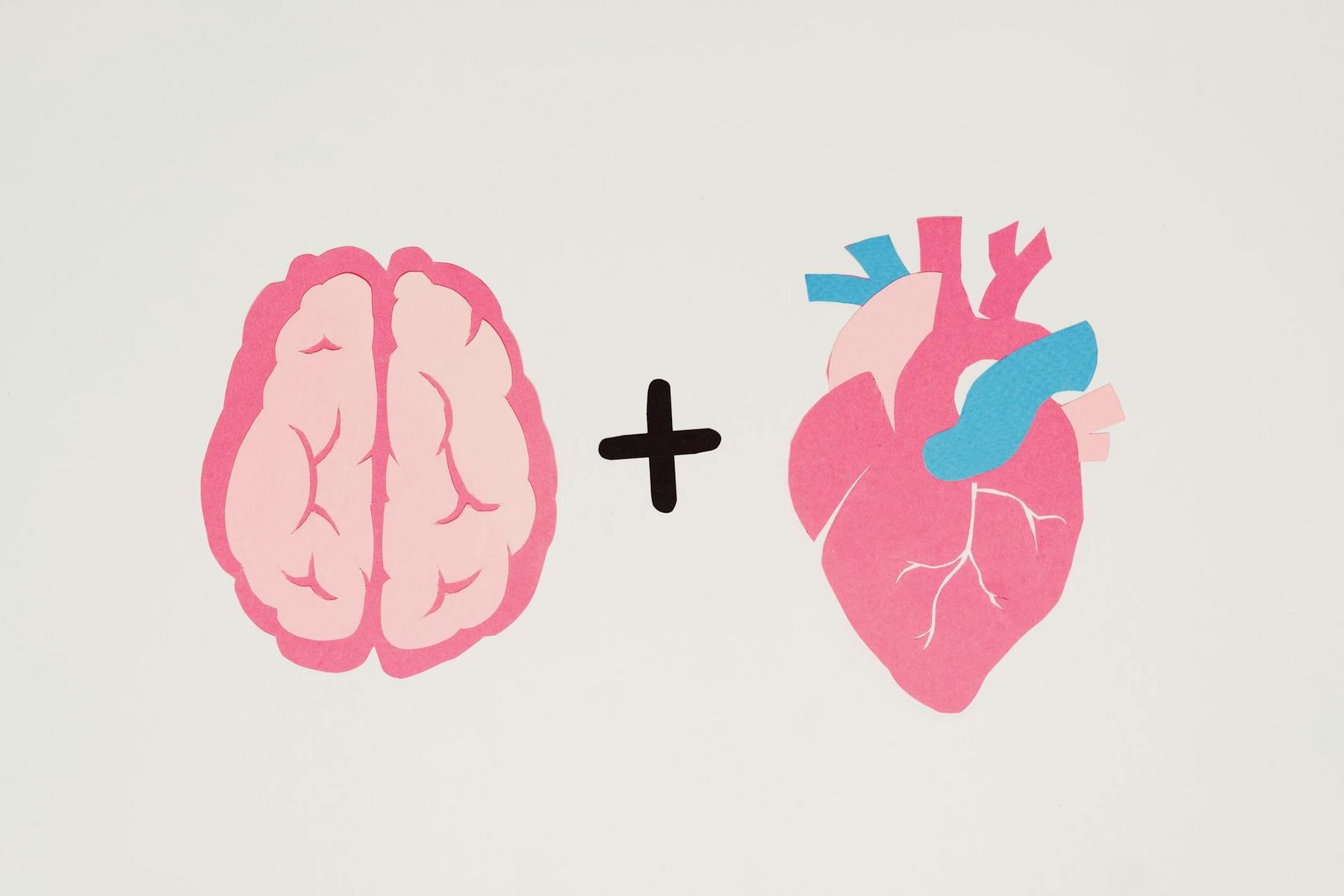The human mind processes between 60,000 to 80,000 thoughts daily, with research suggesting that the majority of these thoughts are repetitive and often negative. In the midst of this mental cacophony, the ancient practice of mantra meditation offers a counterintuitive solution: deliberately choosing which repetitive phrases occupy our consciousness. Unlike the involuntary mental chatter that drains cognitive resources, mantra meditation harnesses the power of intentional repetition to cultivate focused awareness, reduce psychological distress, and facilitate profound states of mental clarity. For Australians seeking evidence-based approaches to mental wellbeing, understanding how repetitive phrases function within meditative practice represents a crucial intersection of traditional wisdom and contemporary neuroscience.
What Is Mantra Meditation and How Does Repetitive Phrase Practice Work?
Mantra meditation constitutes a systematic practice wherein individuals repeatedly vocalise or mentally recite specific sounds, words, or phrases to anchor attention and facilitate meditative states. The Sanskrit term “mantra” derives from two root words: “man” (mind) and “tra” (instrument or tool), literally translating to “instrument of thought” or “mind protection.” This etymological foundation reflects the practice’s core purpose—to serve as a cognitive anchor that prevents mental dispersion.
The mechanics of repetitive phrase practice involve several interconnected processes. When practitioners engage with a mantra, they activate specific neural pathways through consistent stimulation. This repetition creates what neuroscientists term attentional stability, wherein the mind develops increased capacity to maintain focus on a single object. Unlike concentration practices that involve forceful mental effort, mantra meditation typically employs effortless attention, allowing the phrase to flow naturally without strain.
The selection of repetitive phrases varies considerably across traditions and individual preferences. Some practitioners utilise traditional Sanskrit mantras such as “Om” or “So Hum,” whilst others choose meaningful words in their native language. The phrase itself may carry semantic meaning, though many experienced practitioners note that the vibrational quality and rhythmic pattern of the mantra often prove more significant than its literal translation. This distinction highlights an important principle: mantra meditation functions through both the cognitive processing of meaning and the neurophysiological effects of rhythmic repetition.
Contemporary research into repetitive phrase practice suggests that the mechanism operates through multiple channels simultaneously. The auditory processing of sound—whether vocalised aloud or heard internally—engages specific brain regions associated with attention and self-awareness. Concurrently, the rhythmic nature of repetition can entrain brainwave patterns, potentially facilitating the transition from beta (active thinking) to alpha (relaxed alertness) or theta (deep meditation) wave states.
Why Do Repetitive Phrases Create Meditative States More Effectively Than Other Techniques?
The efficacy of repetitive phrases in meditation stems from fundamental principles of human cognition and neuroplasticity. Unlike open-monitoring techniques that require practitioners to observe all mental phenomena without attachment, mantra meditation provides a concrete focal point that accommodates varying levels of meditative experience. This accessibility makes repetitive phrase practice particularly valuable for individuals new to meditation or those experiencing periods of heightened mental activity.
One primary advantage lies in the practice’s ability to occupy the verbal-cognitive network. The human brain possesses a remarkable capacity for internal dialogue, often manifesting as planning, rumination, or self-referential thought. By deliberately engaging this verbal capacity with a chosen mantra, practitioners effectively redirect cognitive resources away from potentially distressing thought patterns. This redirection doesn’t suppress thoughts through force but rather offers the mind an alternative focus that proves more compelling than random mental chatter.
The rhythmic component of repetitive phrases introduces an additional dimension of effectiveness. Rhythm exists as a fundamental organisational principle in biological systems, from circadian cycles to cardiac rhythms. When practitioners synchronise their mantra with breathing patterns or establish a consistent cadence, they tap into the brain’s inherent responsiveness to rhythmic stimulation. This synchronisation can facilitate what researchers describe as “neural coherence,” wherein different brain regions begin operating in more harmonious patterns.
Furthermore, repetitive phrase practice demonstrates remarkable versatility across contexts. Practitioners can engage with mantras during formal sitting meditation, whilst walking, or even as a background awareness during daily activities. This flexibility allows for integration of meditative awareness throughout one’s day, rather than confining practice to dedicated sessions. The portability of the technique—requiring no equipment or specific environment—enhances its practical applicability for contemporary lifestyles.
Research examining the comparative effectiveness of meditation techniques reveals that mantra-based practices often demonstrate more consistent outcomes for reducing anxiety and stress responses. This consistency may result from the technique’s dual action: simultaneously providing a positive focus whilst naturally diminishing attention to distressing thoughts. The practice doesn’t require practitioners to analyse or understand their thoughts, merely to return attention to the mantra when awareness of mental wandering occurs.
How Should Practitioners Select and Work With Repetitive Phrases?
The selection of an appropriate mantra represents a significant decision in establishing a sustainable practice. Whilst traditional approaches often involve receiving a mantra from a qualified teacher within a specific lineage, contemporary practitioners may also select phrases based on personal resonance and intention. Several criteria merit consideration when choosing repetitive phrases for meditation.
Phonetic quality constitutes the first consideration. Effective mantras typically possess smooth, flowing sounds that facilitate continuous repetition without awkward transitions. Sanskrit mantras such as “Om Mani Padme Hum” exemplify this principle, featuring consonants and vowels that blend naturally. Practitioners working in English might select phrases like “peace” or “calm,” ensuring the chosen words can be repeated comfortably for extended periods.
The emotional valence of a phrase requires careful evaluation. Mantras ideally evoke neutral-to-positive associations without triggering strong emotional reactions that might distract from meditative awareness. A phrase carrying painful personal associations, despite being theoretically suitable, may prove counterproductive. Conversely, overly exciting or stimulating words might generate mental activity rather than facilitating the settled awareness characteristic of deep meditation.
Length represents another practical consideration. Mantras range from single syllables to longer phrases, with each length offering distinct advantages. Single-syllable mantras like “Om” provide simplicity and ease of sustained repetition, whilst longer phrases such as “I am at peace in this moment” offer more elaborate semantic content that some practitioners find meaningful. Beginning practitioners often benefit from shorter mantras, progressing to longer phrases as their practice matures.
| Mantra Characteristic | Short Form (1-2 syllables) | Medium Form (3-6 syllables) | Long Form (7+ syllables) |
|---|---|---|---|
| Ease of Retention | Excellent | Good | Requires practice |
| Rhythmic Stability | Very high | High | Moderate |
| Semantic Content | Minimal | Moderate | Rich |
| Attention Required | Low | Moderate | Higher |
| Best For | Deep states, beginners | Balanced practice | Contemplative focus |
The implementation of repetitive phrase practice involves establishing a consistent approach whilst maintaining flexibility. Practitioners typically begin by sitting comfortably, taking several deep breaths, and then introducing the mantra. The phrase may be spoken aloud, whispered, or repeated silently, with many traditions recommending progression from vocal to mental repetition as practice deepens. The mantra coordinates with the natural breathing rhythm, though forcing this coordination proves counterproductive—allowing organic synchronisation to emerge naturally yields better results.
When the mind wanders—an inevitable occurrence even for experienced practitioners—the appropriate response involves gently returning attention to the mantra without self-criticism. This return represents the actual practice of meditation; the wandering itself isn’t a failure but rather an opportunity to strengthen attentional capacity. Over time, practitioners typically notice that the gaps between instances of mind-wandering lengthen, and the return to the mantra becomes increasingly effortless.
What Does Scientific Research Reveal About Repetitive Phrase Meditation?
Contemporary neuroscience and psychology have devoted considerable attention to understanding how repetitive phrase meditation affects brain structure and function. Neuroimaging studies reveal that consistent mantra practice correlates with observable changes in brain regions associated with attention regulation, emotional processing, and self-awareness.
Research examining the default mode network (DMN)—a brain system active during mind-wandering and self-referential thought—demonstrates that mantra meditation reduces DMN activity. This reduction corresponds with practitioners’ subjective reports of decreased rumination and worry. The mechanism appears to involve strengthening connections between the DMN and brain regions responsible for executive control, essentially enhancing the capacity to modulate self-referential thinking.
Studies investigating stress responses indicate that repetitive phrase meditation influences the hypothalamic-pituitary-adrenal (HPA) axis, the body’s primary stress management system. Regular practitioners demonstrate more regulated cortisol patterns and enhanced parasympathetic nervous system activity, suggesting improved physiological resilience to stressors. These findings align with subjective reports of enhanced emotional equilibrium and reduced reactivity to challenging circumstances.
The impact on attention and cognitive function has received particular research focus. Longitudinal studies tracking meditation practitioners over extended periods reveal improvements in sustained attention, working memory capacity, and cognitive flexibility. These enhancements appear to result from neuroplastic changes in the prefrontal cortex and anterior cingulate cortex—brain regions crucial for executive function. Importantly, these benefits manifest not only during meditation but extend to daily cognitive performance.
Psychological research examining the therapeutic applications of mantra meditation reveals promising outcomes across various domains of mental wellbeing. Studies document reductions in anxiety symptoms, improved sleep quality, and enhanced emotional regulation among practitioners. The mechanism likely involves multiple pathways: direct effects on physiological arousal, cultivation of metacognitive awareness, and development of a more adaptive relationship with thoughts and emotions.
Research has also explored the temporal dynamics of mantra practice, investigating how benefits accumulate over time. Initial effects often include immediate relaxation and reduced physiological arousal during practice sessions. With consistent practice over weeks to months, practitioners typically develop more stable trait changes—lasting shifts in baseline anxiety levels, stress reactivity, and attentional capacity. These findings underscore the importance of regular, sustained practice rather than sporadic engagement.
Can Mantra Meditation Integrate With Contemporary Wellness Approaches?
The integration of mantra meditation within holistic wellness frameworks represents a growing area of interest among healthcare professionals and individuals seeking comprehensive approaches to wellbeing. Unlike interventions targeting isolated symptoms, repetitive phrase meditation addresses fundamental aspects of mental health—attention regulation, stress resilience, and emotional awareness—that influence multiple dimensions of wellness.
Contemporary integrative approaches increasingly recognise that optimal wellbeing emerges from addressing multiple interconnected factors rather than focusing exclusively on specific symptoms or conditions. Mantra meditation complements other wellness modalities by enhancing the foundational capacity for self-awareness and present-moment attention. This enhanced awareness allows individuals to recognise early signs of stress, respond more effectively to physical discomfort, and make more conscious choices regarding health behaviours.
The practice demonstrates particular synergy with other contemplative and somatic practices. When combined with movement modalities such as yoga or tai chi, mantra meditation can deepen the mind-body connection and enhance proprioceptive awareness. The rhythmic quality of repetitive phrases naturally aligns with the rhythmic nature of movement, creating an integrated experience of embodied awareness. Similarly, practitioners of breathwork find that mantras provide a natural anchor for maintaining attention during extended breathing exercises.
For healthcare professionals supporting individuals with chronic stress or anxiety, mantra meditation offers a valuable self-management tool that empowers patients to actively participate in their wellbeing. Unlike passive interventions, meditation cultivates skills that individuals can apply independently across various life circumstances. This self-efficacy aspect proves particularly valuable for long-term wellness maintenance.
Australian healthcare contexts increasingly acknowledge the role of evidence-based contemplative practices within comprehensive care frameworks. Professional organisations recognise that supporting patients in developing meditation skills complements other therapeutic approaches whilst respecting individual autonomy and preferences. Healthcare providers trained in meditation instruction can offer guidance whilst maintaining appropriate professional boundaries, ensuring practices align with patients’ broader wellness goals.
The personalisation of mantra practice within integrated wellness approaches deserves emphasis. Different individuals respond to various aspects of repetitive phrase meditation based on their cognitive styles, life circumstances, and wellness objectives. Some individuals benefit most from the physiological relaxation effects, whilst others value the enhanced self-awareness or reduced ruminative thought. Tailoring practice parameters—including mantra selection, session duration, and integration with other modalities—optimises outcomes and enhances long-term adherence.
What Challenges Might Practitioners Encounter and How Can These Be Addressed?
Despite its apparent simplicity, mantra meditation presents several challenges that warrant acknowledgement and practical solutions. Understanding these obstacles enables practitioners to navigate difficulties more effectively and maintain sustainable practice over time.
Initial frustration with mental wandering represents perhaps the most common challenge. Beginning practitioners often express disappointment when discovering the frequency with which their attention drifts from the mantra. This response reflects a fundamental misunderstanding: mental wandering isn’t a failure but rather the natural tendency the practice aims to address. Reframing each instance of noticing distraction as a successful moment of awareness—rather than evidence of inadequate performance—transforms the practice from a frustrating struggle to a progressive training process.
Physical discomfort during seated practice poses another significant barrier. Extended periods of stillness may generate bodily sensations that demand attention, potentially disrupting focus on the mantra. Addressing this challenge requires balanced attention to physical comfort without creating excessive dependence on perfect conditions. Practitioners benefit from experimenting with different postures, using supportive cushions, and gradually extending sitting duration as physical tolerance develops. Importantly, incorporating movement-based mantra practice—such as walking meditation with a repetitive phrase—provides alternatives when seated practice proves challenging.
The phenomenon of the mantra becoming mechanical or losing its effectiveness concerns many practitioners. After extended practice periods, the repetitive phrase may seem to lose its potency or feel rote rather than engaging. This development actually represents a natural progression wherein the mantra becomes increasingly effortless. Rather than indicating diminished practice quality, this mechanical quality often precedes deeper states of awareness wherein the mantra operates with minimal conscious effort, allowing more subtle aspects of meditative experience to emerge.
Practitioners occasionally report experiencing increased awareness of thoughts and emotions as their practice develops, sometimes interpreting this as meditation “not working.” This heightened awareness actually demonstrates practice effectiveness—meditation enhances sensitivity to mental and emotional processes that previously operated below conscious awareness. Recognising this increased awareness as progress rather than regression helps practitioners maintain commitment during challenging phases.
Time constraints and lifestyle demands present practical obstacles to establishing consistent practice. Addressing these challenges requires realistic planning and flexible approaches. Beginning with brief sessions—even five to ten minutes—establishes the habit whilst remaining achievable within busy schedules. Linking practice to existing daily routines (such as upon waking or before sleep) enhances consistency. Additionally, recognising that practice quality matters more than duration helps prevent perfectionism from undermining regular engagement.
Establishing Sustainable Practice Within Modern Life
The integration of mantra meditation into contemporary Australian lifestyles requires thoughtful consideration of practical factors that support long-term engagement. Sustainability in meditation practice emerges not from willpower alone but from creating conditions that facilitate regular participation whilst accommodating life’s inevitable fluctuations.
Environmental factors significantly influence practice sustainability. Designating a specific location for meditation—even a corner of a room—creates psychological associations that facilitate the transition into meditative states. This space need not be elaborate; consistency of location proves more valuable than aesthetic perfection. Minimising external distractions during practice times, when possible, supports deeper engagement, though developing the capacity to practice amidst occasional disruptions enhances practical applicability.
The relationship between formal practice sessions and informal mantra use throughout the day warrants attention. Whilst dedicated meditation periods provide intensive training for attentional capacity, integrating the mantra as a brief anchor during daily activities extends the practice’s benefits. Repeating the mantra during transitions between activities, whilst waiting, or during moments of stress creates continuity of awareness without requiring additional time allocation. This integration transforms meditation from an isolated activity into an accessible resource available throughout one’s day.
Community support and guidance can substantially enhance practice sustainability. Many Australians benefit from participating in meditation groups, whether in-person or online, that provide accountability, shared experience, and opportunities for learning. Professional instruction from qualified meditation teachers offers personalised guidance that addresses individual challenges and ensures proper technique. However, practitioners should exercise discernment in selecting teachers and communities, prioritising those emphasising evidence-based approaches and respecting individual autonomy.
Tracking practice without obsessive monitoring strikes an important balance. Brief notes regarding practice frequency, duration, and notable observations can help identify patterns and maintain motivation. However, excessive focus on metrics or rigid adherence to predetermined practice schedules may introduce stress that undermines the practice’s wellbeing benefits. Maintaining flexibility whilst honouring commitment to regular practice reflects mature engagement with meditation.
The evolution of practice over time deserves acknowledgement. Initial enthusiasm may give way to periods of reduced motivation—a natural occurrence in any long-term endeavour. Recognising these fluctuations as normal rather than evidence of personal failure prevents premature abandonment of practice. Adjusting practice parameters during challenging periods, such as temporarily reducing session duration or exploring different mantras, maintains engagement whilst accommodating life circumstances. The goal involves establishing meditation as a sustainable lifelong resource rather than a temporary intervention or rigid obligation.
Understanding that repetitive phrase meditation represents one approach within a broader spectrum of contemplative practices provides valuable perspective. Different life phases or circumstances may call for emphasising alternative techniques whilst maintaining mantra practice as a foundational element. This flexibility prevents stagnation and supports continued growth in meditative capacity across decades of practice.
Embracing the Transformative Potential of Disciplined Awareness
The practice of mantra meditation stands as a testament to the profound impact that simple, consistent actions can exert on human consciousness and wellbeing. Understanding repetitive phrases within their proper context—as sophisticated tools for training attention and cultivating awareness—reveals depths that superficial examination might miss. The seeming paradox of using repetition to escape repetitive thought patterns reflects a sophisticated understanding of mental mechanics that contemporary neuroscience continues to validate.
For Australians navigating the complexities of modern life, repetitive phrase meditation offers a practical, evidence-based approach to enhancing mental resilience and cultivating inner stability. The practice requires no special beliefs, expensive equipment, or extraordinary time commitments—merely consistent engagement with a technique that humans have refined over millennia. As research continues illuminating the mechanisms through which mantra meditation influences brain function and psychological wellbeing, the integration of this practice within comprehensive wellness approaches will likely expand.
The journey with mantra meditation unfolds gradually, revealing its gifts through patient, sustained engagement rather than dramatic instantaneous transformations. This gradual unfolding aligns perfectly with the development of genuine, lasting change in human consciousness and behaviour. By choosing which repetitive phrases occupy our awareness, we exercise a fundamental form of mental autonomy—selecting the internal landscape we cultivate through the most powerful tool we possess: attention itself.
Looking to discuss your health options? Speak to us and see if you’re eligible today.
How long should I practise mantra meditation each day to experience benefits?
Research indicates that benefits emerge with sessions as brief as 10-15 minutes daily, though most traditions recommend 20-30 minutes once or twice daily for optimal results. Consistency is key, so starting with manageable durations and gradually extending practice time is recommended.
Can I change my mantra, or should I maintain the same repetitive phrase indefinitely?
Both approaches have merit. Traditional paths often encourage using a single mantra long-term to deepen its impact, while contemporary practice allows for adjustments based on evolving needs. If you choose to change your mantra, allow several months with one before switching to ensure proper integration.
What should I do when my mind wanders during mantra meditation?
Mind wandering is a normal aspect of meditation. When you notice distraction, gently acknowledge it without judgment and return your focus to the mantra. This act of returning is the core practice that gradually strengthens attention.
Is it necessary to understand the meaning of my mantra for the practice to be effective?
Understanding the meaning isn’t essential to effective practice. Many traditional mantras, particularly in Sanskrit, are used for their vibrational and rhythmic qualities. However, if a meaningful phrase resonates more with you, it can enhance engagement and motivation.
Can mantra meditation complement other wellness practices I’m already engaged in?
Absolutely. Mantra meditation can be integrated with activities like yoga, tai chi, or breathwork, enhancing self-awareness and stress resilience. It complements other practices by providing a steady mental anchor and fostering a holistic approach to wellness.













